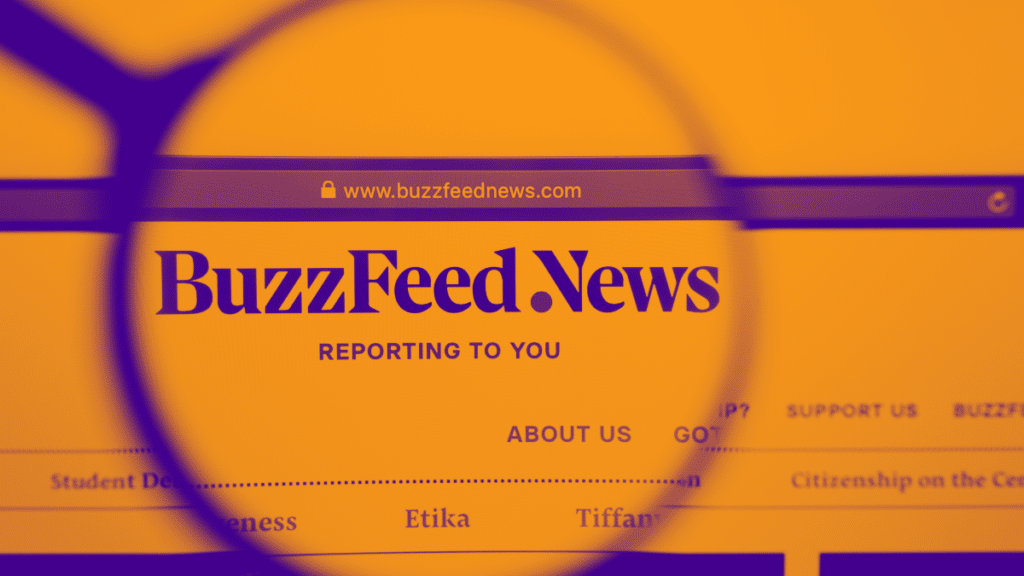It’s Time to Acknowledge Big Tech Was Always at Odds with Journalism
Karina Montoya / May 8, 2023Karina Montoya is a journalist with a background in business, finance, and technology reporting for U.S. and South American media. She researches and reports on broad media competition issues and data privacy at the Center for Journalism & Liberty, a program of the Open Markets Institute, in Washington, D.C.
This year will be one of the bloodiest for digital media. BuzzFeed News is shutting down, following several layoffs at Vox Media, Insider, NBC News, Gannett, and CNN announced in the first quarter. As I write this article, the New York Times broke the news that VICE is preparing to file for bankruptcy.
Of course, tech firms such as Google and Facebook are also reducing headcounts. But first quarter earnings for those two tech giants, which beat market estimates and made their stocks soar, sent a clear message to investors: Big Tech corporations may be getting rid of some people here and there, but that doesn’t mean they are failing. They have, in fact, plenty of wiggle room to continue business as usual.
This sharp contrast between the tech behemoths and digital news media companies should help us recast the last 15 years of journalism in a new light, one that can help us see that market consolidation in the tech industry impacted journalism in ways we had not seen before.
Perhaps, through this lens, we will be able to move on from the idea that the interests of a tech industry that wanted to grow big and fast were ever going to preserve journalism in the digital world — if that world was ultimately going to be run by a handful of market players with both infinite money and access to personal data.
Times of Confusion
The rise and fall of BuzzFeed News is, in short, a cautionary tale of overreliance on social media platforms to distribute news sustainably. The first half of the 2010s was a time when digital news sites were all obsessed with getting traffic, whether that was from search or social media, with the goal of converting eyeballs into advertising revenues.
From a business perspective, one could argue that it made sense for young newsrooms to run alongside the companies that were becoming gateways to the internet. As journalist John Herrman explains, media companies tethered to the giants of the moment were able to raise money by marketing themselves as part of the next revolution. But from that same perspective, such platform dominance translated into a gatekeeping power that ultimately produced an economic disadvantage for news media.
Across the board, BuzzFeed News and many other digital newsrooms evolved in the context of a massive consolidation of the communication infrastructure necessary to “meet people where they were.” After all, the 2010s was also the decade when services such as online search, video streaming, social media, email, digital advertising, and mobile came to be dominated by Google and Facebook.
The social media landscape in the first half of the 2010s was defined by Facebook, which launched a series of products that promised to be the “next big thing” for digital news: Facebook News Tab, Facebook Video, and Instant Articles. Facebook had a disproportionate influence on news production. As Slate editor-in-chief Hillary Frey wrote recently, one day journalists would be hired with the expectation to do video shows, only to end up the next day doing two-minute news summaries, “because that’s what Facebook wanted.”
But by 2018, it became clear social media had enough power to alter the destinies of all news publishers. After exponentially increasing its share of traffic to news, Facebook unilaterally decided to downgrade the relevance of news on users’ feeds and favor content posted or liked by friends and family. That way, a post about your breakfast would be more likely to be seen by your network than news you shared. It was a very confusing time for newsrooms, and the traffic bubble started to burst.
It’s not as if nobody saw it coming. In February of 2018, Nick Thompson and Fred Vogelstein wrote on Wired: “Every publisher knows that, at best, they are sharecroppers on Facebook’s massive industrial farm […] If Facebook wanted to, it could quietly turn any number of dials that would harm a publisher – by manipulating its traffic, its ad network, or its readers.”
Competing for ad revenue was — and still is — another monster problem. The 2010s also saw the profound growth of the ad tech industry, as the new digital companies that connected news publishers with advertisers to sell and buy ads started to consolidate. This transformation was driven by Google, with its acquisition of DoubleClick and other key companies that followed. Google, which already sold ads on its search engine and YouTube, became a key intermediary for ad sales for news publishers, all the while competing against them for the same pool of advertising dollars.
Fortunately, the consolidation of digital tools that facilitate ad sales and the resulting conflicts of interest are finally getting attention from antitrust enforcers. Today, Google’s ad business faces an antitrust lawsuit by the Department of Justice, which alleges Google manipulated ad prices and would have siphoned at least $200 million of ad dollars from publishers that chose not to use Google digital tools to sell ads. Google has denied all allegations. We will need to wait until next year, when the DOJ and Google are most likely to go to trial, to see a resolution of this case.
This is not to say that news organizations and media executives haven’t had individual and particular roles to play in the current media crisis. To be sure, it has always been difficult to make money from journalism, and that is true in any country with a free press. But when you face market powers that are gobbling up the internet, this market transformation is not just another difficulty to overcome. It becomes an existential challenge.
A New Beginning?
For the last 15 years, news media has been in the search of novel revenue models. Many alternatives to keep good journalism alive have emerged, such as non-profit news media relying more on philanthropy, or media co-operatives. But ultimately, none of these alternatives grapple with the core of the problem, which is how we, the people, want markets to be structured to enable reporting and publishing news and information, and holding power to account.
Do we want to preserve the dominance of companies that like to act as if they are neutral communications platforms, when they also act as publishers without the responsibilities that come with that? Do we want digital behemoths to accumulate so much power that they can exploit personal data in ways that buttress their dominance and diminish the value of news media audiences?
Newsrooms that seek to be financially independent need to acknowledge that the answers to these questions affect them too, whether they once thought of copying BuzzFeed’s business model or not. Now digital media seems to be returning to the foundations of the early 2000s, where “home traffic, blogging and niche newsletters” are a priority, as Semafor’s Max Tani reports. It is uncertain where this is going to lead. But without bold policies that dismantle the power of Big Tech over journalism and news media, it’s hard to make the case that we are at the dawn of a new beginning.
Authors

